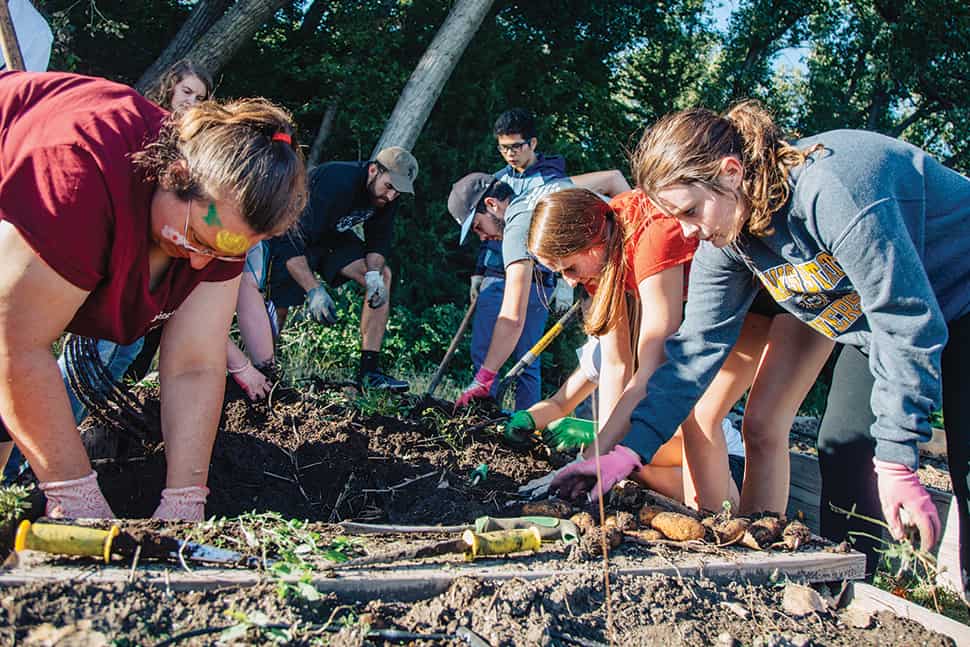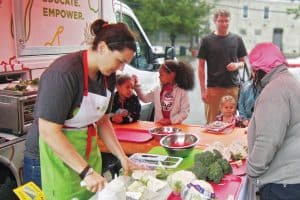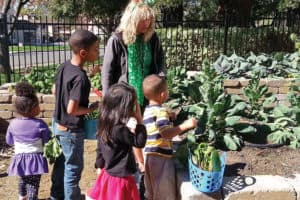
Choosing a major, securing financial aid, getting good grades—these are the common concerns of most college students. But increasingly many also worry where their next meal might come from. Some academic libraries around the country are stepping in to help by housing pantries or offering food onsite.
A US Government Accountability Office (GAO) report released in December 2018 reviewed 22 studies estimating that more than 30% of college students face food insecurity amid the rising costs of higher education. The report estimates that there are nearly 2 million at-risk students—most often they are first-generation college students, low income, or single parents. A 2018 survey of college pantries by the Hope Center for College, Community, and Justice, a research group at Temple University in Philadelphia, says the problem is even bigger; it estimates that nearly 50% of undergraduates face food insecurity. Food-insecure students tend to perform at lower levels academically and complete their degrees at lower rates, the survey found.
Fort Hays State University (FHSU) in Hays, Kansas, stocks free provisions at its pantry, Tiger Food Exchange, located on the first floor of Forsyth Library. The pantry offers produce from a university garden, along with donations from faculty, students, and local businesses. Library staffers help guide students to the pantry and ensure the area stays stocked and organized.
“We started with the garden because that was logical to grow some food first,” says Bob Duffy, cochair of food and hunger initiatives at FHSU. “Then it was like: Where do we make this food available? The library was the logical place.”
“I think it’s nice to address the mind, but it’s great to address the body as well,” says Library Dean Deborah Ludwig. “It fits in beautifully with what we do. It doesn’t seem odd to us that it’s here. It’s such a part of our landscape.”
The Tiger Food Exchange serves some 1,700 people each year, including students, faculty, and staff. Each person can select up to 10 items per visit to the Forsyth Library pantry, which also contains a freezer and refrigerator. Students are not required to provide an ID to access pantry resources. Last Thanksgiving, the exchange gave out about 35 bags designed to feed four people each.
Jaden Mount, an FHSU senior who works two jobs in addition to pursuing his studies, says he typically grabs a few items from the pantry every couple of weeks. He says he doesn’t depend on the service, but he uses it when he feels crunched by bills or wants to supplement his diet with healthier choices.
He says the library seems like an unusual place to have a pantry, but it makes sense at FHSU because of the library’s proximity to the quad and residence halls, along with the fact that students spend a lot of time there anyway. “It’s really putting one great resource inside of another,” Mount says.
‘Sharing resources’
Mason Library at Keene (N.H.) State College partners with the campus pantry to offer bags of food that students can claim at the circulation desk. That partnership stemmed from the limited hours of the Hungry Owl, a pantry launched by the school’s premed students.
“This [library] was the first [solution] they thought of because we have such extended hours,” says Library Dean Celia Rabinowitz. “We’re open a lot, particularly during the academic year. We’re open seven days a week, we’re open late at night.”
Students can claim bags of food stored at the circulation desk in two plastic tubs by showing their student ID, which they use to check out materials ranging from books to bikes. Rabinowitz says the system offers students privacy because it verifies that they attend the school without recording their names.
The Tiger Food Exchange serves some 1,700 people each year, including students, faculty, and staff.
“You could be checking out books, you could be checking out markers, you could be doing anything,” she says. “As libraries, we’re all about sharing resources, and this is just another way in which we share resources.”
The tubs typically hold 10–12 bags of food at a time, and it may take a week or more to pass those out, Rabinowitz says. Keene also offers open baskets with snacks like granola bars that can be claimed by anyone.
“Do what you can, even if you can’t start a pantry,” says Elizabeth Dill, director of library services at Troy University at Dothan, Alabama. Dill is working with Troy’s student government and administration, a local food bank, and other stakeholders on the issue of food insecurity on campus and generating support for a library-based initiative at her school.
She says educating administration or faculty is important in starting a food initiative, as some may not embrace the idea that a need exists on their campus.
“You can do an exhibit, you can do a LibGuide, you can bring in speakers, someone on your faculty can speak,” Dill says. “There are a lot of ways libraries can participate.”


